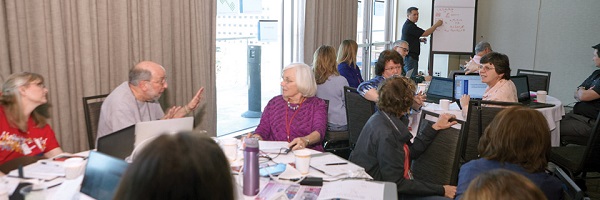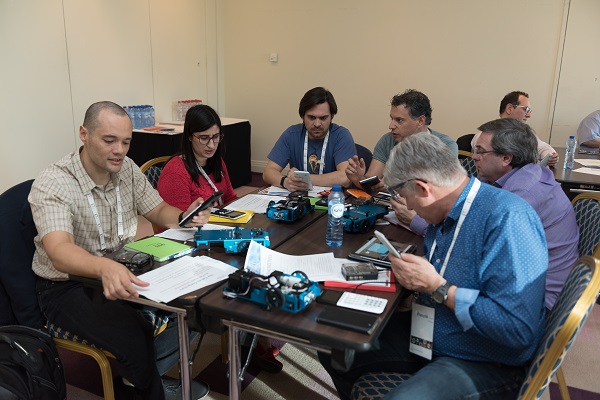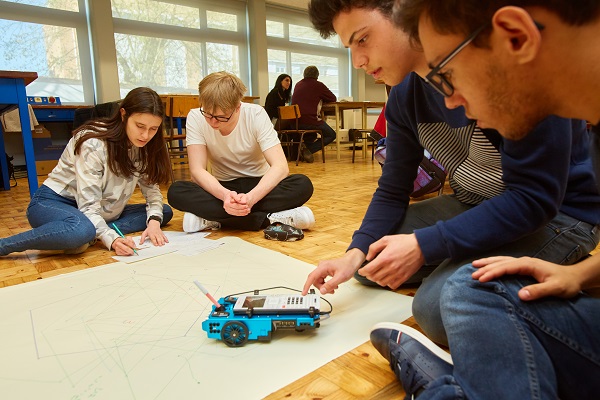Happy birthday to us! T³ Europe - 25 years old and still young
At the end of the 1980s, the first graphing calculators appeared on the market. These were primarily designed for professional and university users, i.e. professional engineers and those who were to become engineers. It was up to two professors for math education at Ohio State University, Columbus, Ohio, Bert Waits and Frank Demana, to change that.
Bert Waits and Frank Demana realized very early on that the real potential of graphing calculators lay in the educational opportunities they opened. With a graphing calculator, it became possible for the first time not only to calculate mathematical relationships but also to visualize them. By plotting function graphs, zeros and extreme values were no longer abstract constructs, but became tangible - tangible for many students for the first time. Due to the low price, complex calculations and visualizations were no longer reserved for a few experts, but access to mathematics was democratized. "The Power of Visualization" as Bert Waits phrased his visionary idea.

With the technical possibilities (How do I create a function graph?) came the didactic and methodological possibilities (Why do I create a function graph?). The developing new didactic possibilities excited many teachers who gathered in the teachers' network T³ - Teachers Teaching with Technology. Bert Waits was the one who brought the young idea to Europe. In 1996 the time had come. T³ Europe was founded at the International Congress of Mathematical Education (ICME-8) in Seville, Spain.
With the new pedagogical ideas came new demands on the technical tools. State-of-the-art multiple representation tools that cover algebra, analysis, and statistics as well as geometry, spreadsheets and coding. Tools that are available as hardware, software or app that make measurement data acquisition possible, can be used flexibly in teaching and safely used for tests. The interplay of pedagogical requirements and technical enablement by a manufacturer characterized the relationship between the T³ teacher network and Texas Instruments from the very beginning, which many therefore describe as symbiotic.

T³ Europe immediately found ardent supporters in Europe as well. Both on the side of teachers, who increasingly gained practical teaching experience, and on the side of universities, which systematized this experience and put it into a theoretical framework. The movement resulted in countless research projects on a wide variety of issues, which were also richly published. Thus, graphing calculators are probably the best-studied electronic tool for teaching mathematics and science.

The findings from teaching practice and convincing research finally flowed into the curriculum and examination reforms of recent years. While the PISA shock was the primary catalyst for these reforms, the changes in examination formats developed by T³ also fueled the reorientation of content. Many of the ideas developed by T³ are now mainstream. A comparison of textbooks or exams back then with today makes this impressively clear.
Today, T³ is broadly positioned in terms of content and subject matter, and at its core, it works in two directions at the same time. On the one hand, colleagues are supported in the implementation of today's curricula through a wide-ranging continuing education program and stimulating teaching materials. On the other hand, T³ is dedicated to the eternally young question of future mathematics and science teaching with the inclusion of subject-tailored hardware and software, a complex that the TI STEM Labs in particular are pursuing in international exchange.

- Know more about T3 Europe and participate in the numerous activities being organized
